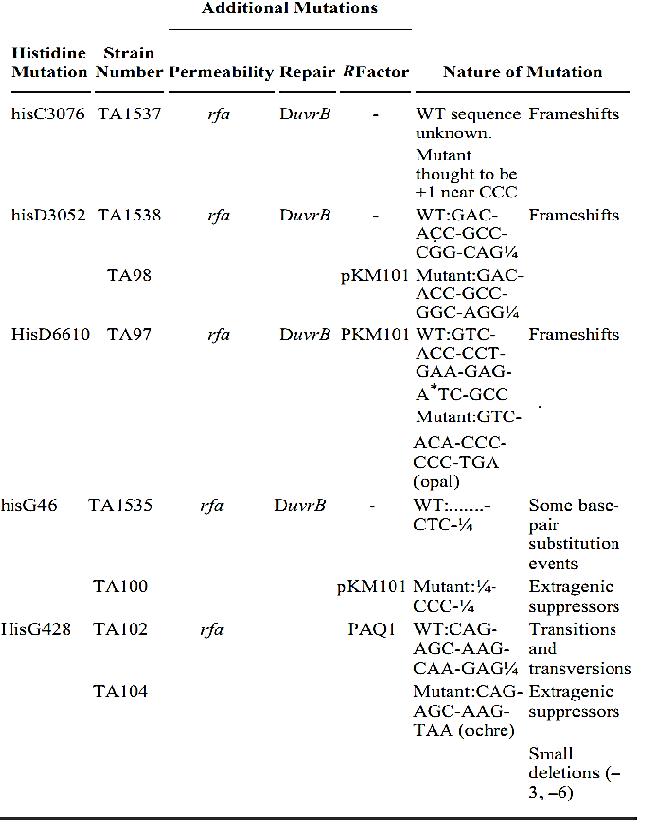


 النبات
النبات
 الحيوان
الحيوان
 الأحياء المجهرية
الأحياء المجهرية
 علم الأمراض
علم الأمراض
 التقانة الإحيائية
التقانة الإحيائية
 التقنية الحيوية المكروبية
التقنية الحيوية المكروبية
 التقنية الحياتية النانوية
التقنية الحياتية النانوية
 علم الأجنة
علم الأجنة
 الأحياء الجزيئي
الأحياء الجزيئي
 علم وظائف الأعضاء
علم وظائف الأعضاء
 الغدد
الغدد
 المضادات الحيوية
المضادات الحيوية|
Read More
Date: 23-4-2021
Date: 7-11-2020
Date: 2-11-2020
|
Ames Test
The Salmonella/mammalian microsome test for mutagens was originally developed in the laboratory of Bruce Ames (1) and has become sufficiently used and well-recognized to be familiarly described by his name. The assay utilizes several specially constructed strains of Salmonella typhimurium that normally require histidine for growth and can be reverted to prototrophy by a wide range of different mutagens. The assay requires that test chemicals and bacteria be plated onto a minimal agar petri dish, incorporating trace amounts of histidine and biotin, which are required for growth, to allow all the bacteria to grow through a small number of generations. In the absence of mutagen, a small number of colonies will grow on these plates, whereas mutagenic chemicals may increase this number very considerably. Mutations are scored as the number of revertant colonies per dish, usually as a function of applied dose. The test protocol incorporates homogenates of (usually) rat liver directly into the petri dish, thereby permitting mammalian metabolism of many compounds that require activation before they will interact with cellular DNA.
The DNA sequence around the original mutation has been determined in those strains most commonly used for mutagenicity testing (Table 1). The bacteria have been made more sensitive to mutagens by the introduction of several additional characteristics. Many of the strains carry a deletion in the uvrB gene and are defective in the ability for DNA repair. The bacterial cell wall has increased permeability to bulky chemicals because of the rfa mutation, and certain introduced plasmids may increase the sensitivity of the bacteria to mutation by some types of chemicals. The Ames test was originally developed as a screen for chemical carcinogens (1), but this has only proved appropriate to certain chemical classes (eg, Ref. 2). Nevertheless, because of the enormous number of chemicals tested in this assay, it must still occupy a premier position in testing for mutagenic properties of chemicals.
Table 1. Genotype and Reversion Characteristics of Some Salmonella typhimurium Strains Commonly Used for Mutagenicity Testing

References
1. B. N. Ames, J. McCann, and E. Yamasaki (1975) Mutat. Res. 31, 347–364.
2. J. Ashby and R. W. Tennant (1994) Mutagenesis 9, 7–16.



|
|
|
|
دخلت غرفة فنسيت ماذا تريد من داخلها.. خبير يفسر الحالة
|
|
|
|
|
|
|
ثورة طبية.. ابتكار أصغر جهاز لتنظيم ضربات القلب في العالم
|
|
|
|
|
|
|
قسم شؤون المعارف ووفد من جامعة البصرة يبحثان سبل تعزيز التعاون المشترك
|
|
|